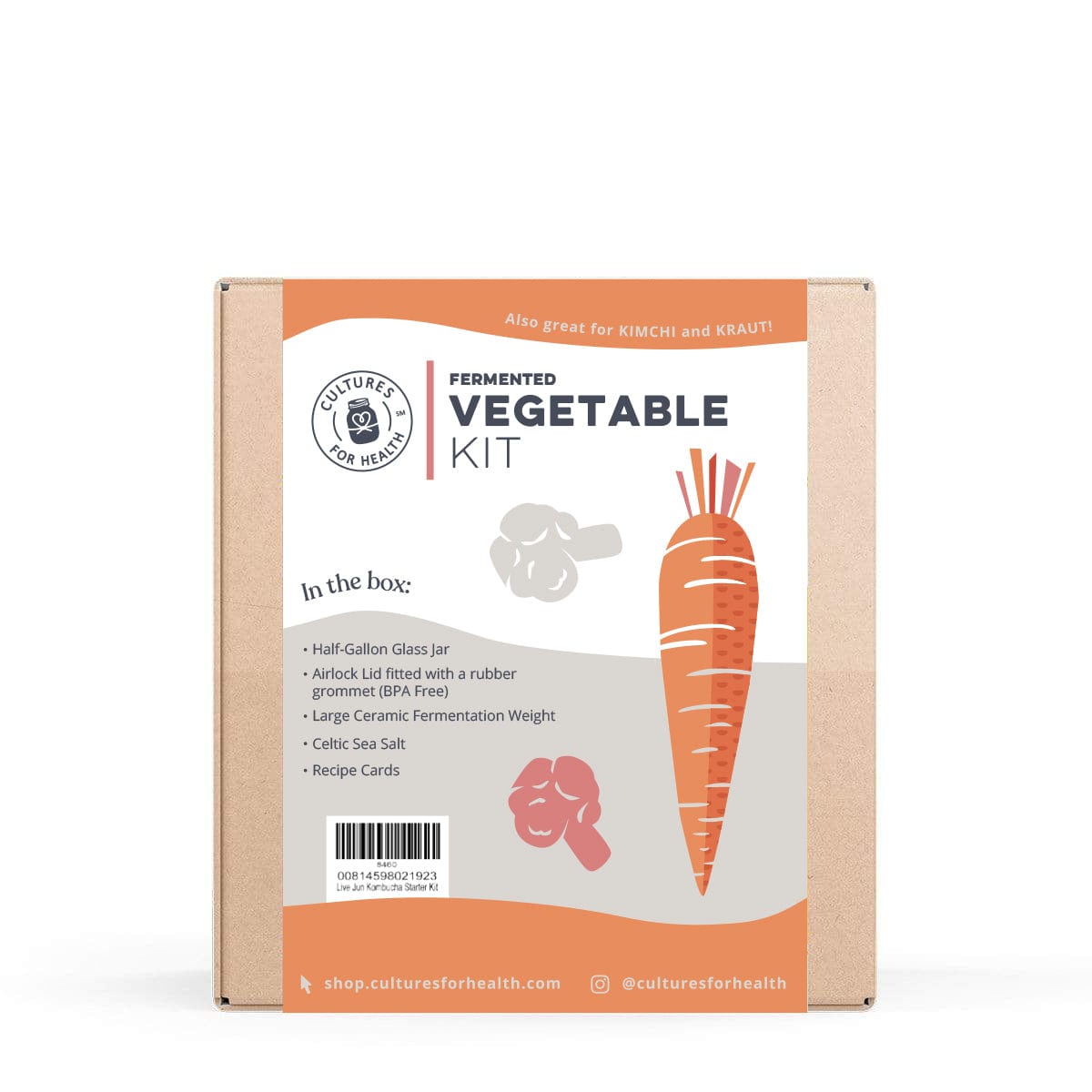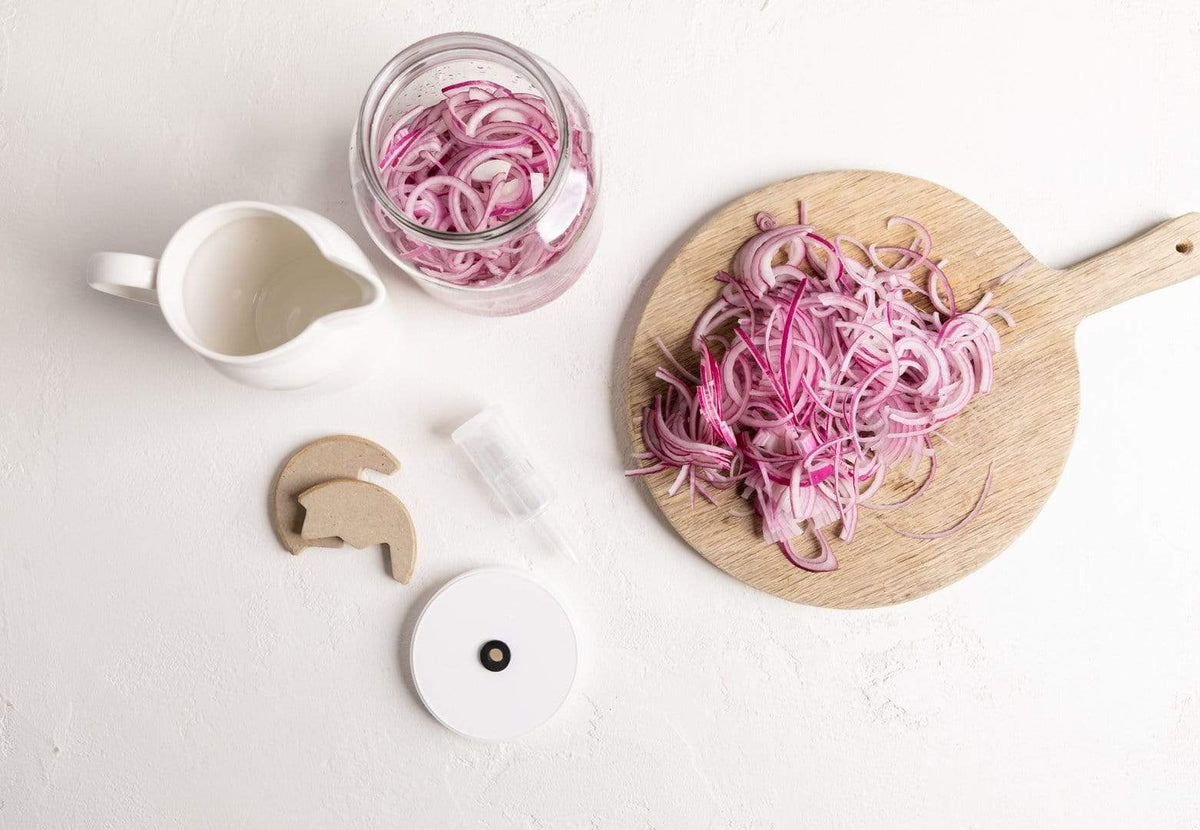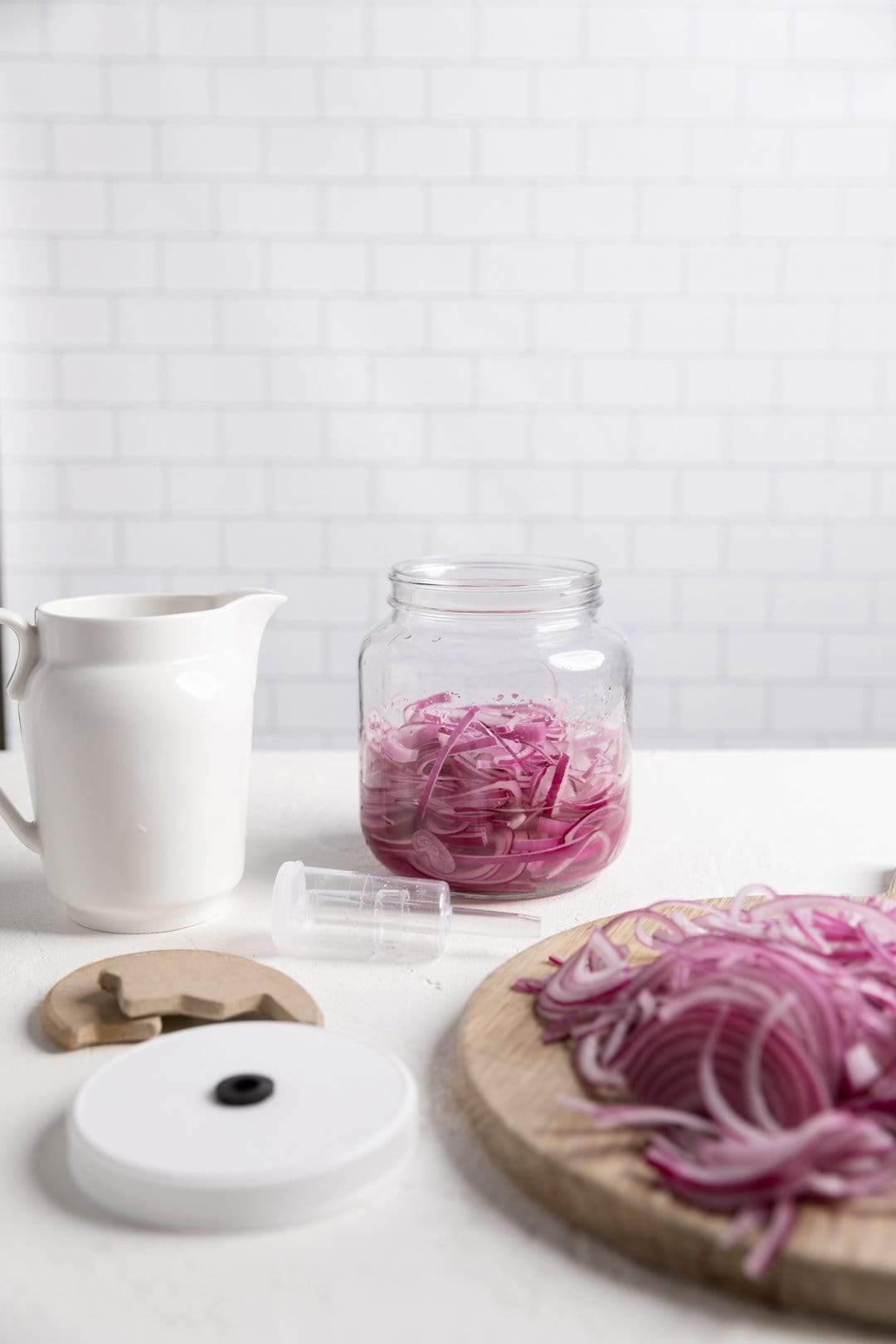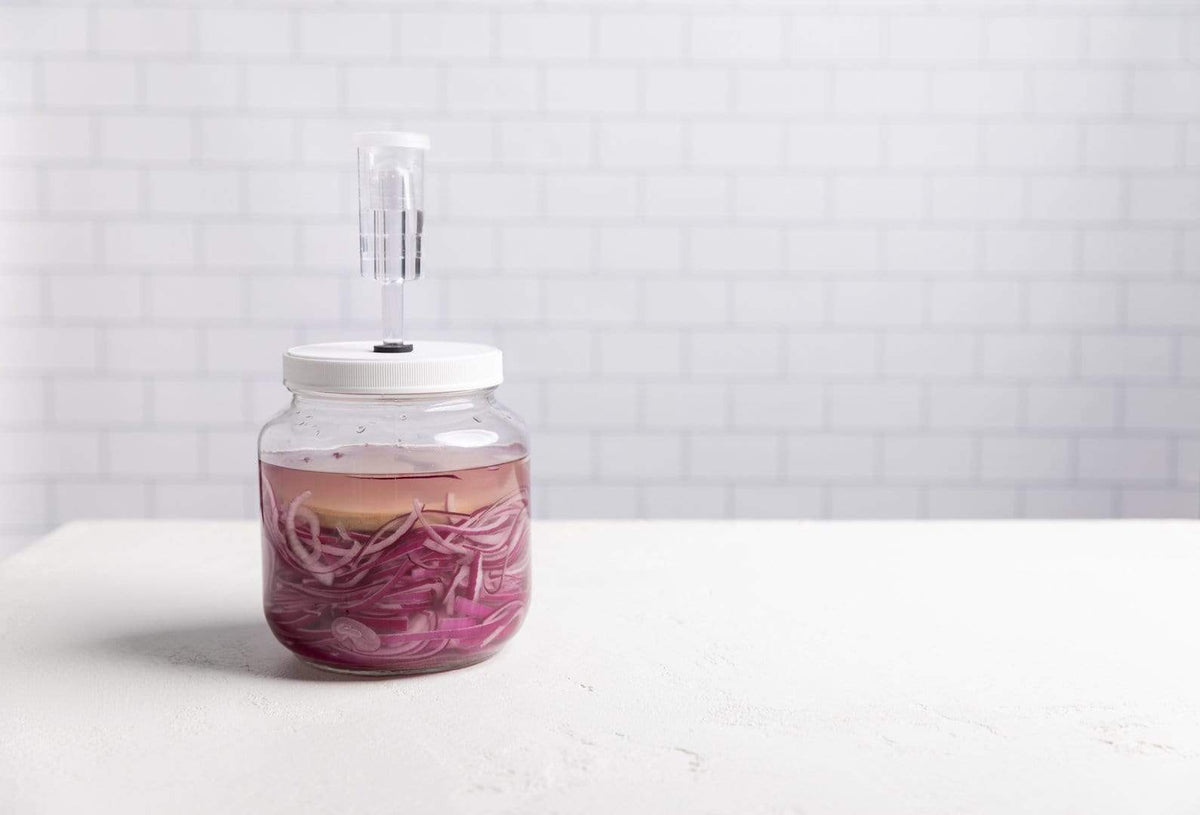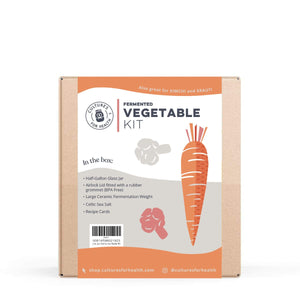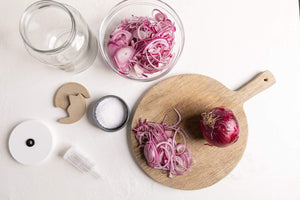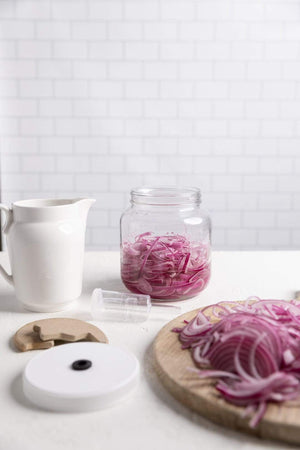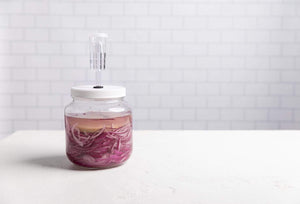
Salt is an important ingredient in fermentation. Not only does it keep unwanted bacteria from propagating, it also helps to keep the vegetables crunchy and crisp, adds flavor, preserves vitamin content, and can slow the fermentation process to allow flavor to develop more fully.
If you’ve been browsing fermented vegetable recipes, you may notice that each calls for a different amount of salt. The amount of salt added to vegetables can vary depending on personal taste preference, the vegetables and other ingredients called for, and even the size of the vegetable pieces. There are 2 ways to add salt to vegetable ferments.
Make the most of fermenting vegetables with our easy-to-follow cookbooks. Click to download our Lacto-Fermentation Guide and Recipe book, packed with tips and tricks to help you ferment vegetables like a pro. Plus, they come with delicious recipes that will tantalize your taste buds.
TWO METHODS FOR ADDING SALT TO A VEGETABLE FERMENT
Method #1
Add salt to shredded or chopped vegetables directly, such as cabbage for sauerkraut. Kneading salt into the vegetables draws the juice out; the vegetables then ferment in their own juices.
Method #2
Dissolve salt in water, to make a brine. Submerge the vegetables in the brine completely for proper fermentation.
Fermented Vegetable Kit
HOW MUCH SALT DO I USE?
Our rule of thumb for salt in vegetable ferments is 1-3 tablespoons per quart of water.
Method #1
Add 1-3 tablespoons of salt directly to a medium head of cabbage or equivalent amount of other shredded vegetables before pounding or kneading, to make about 1 quart of finished product.
Method #2
For making a brine to cover vegetables, dissolve 1-3 tablespoons salt in 1-quart water.
DON'T BE AFRAID TO EXPERIMENT
Depending on the coarseness of the salt, one tablespoon can equate to a different weight of salt, so a different level of saltiness in the finished batch. It may take some experimentation to achieve just the right flavor, and the amount of salt preferred may vary with different vegetables. A salty sauerkraut may be tasty, but the same amount of salt may not work in a batch of shredded carrots.
In any recipe for fermented vegetables, it is acceptable to reduce or increase the amount of salt to fit your taste. However, there are limits on both ends. Too little salt may allow mold and other unwanted bacteria into the batch; it may not keep the vegetables crisp. Too much salt can slow the fermentation process down to the point of halting it altogether.
Stay within the range of 1-3 tablespoons salt per quart, and with minor adjustments, you will produce delicious, nutritious fermented vegetables every time!
Download our Lacto-Fermentation Guide and Recipe book and start enjoying the benefits of fermenting vegetables today!













